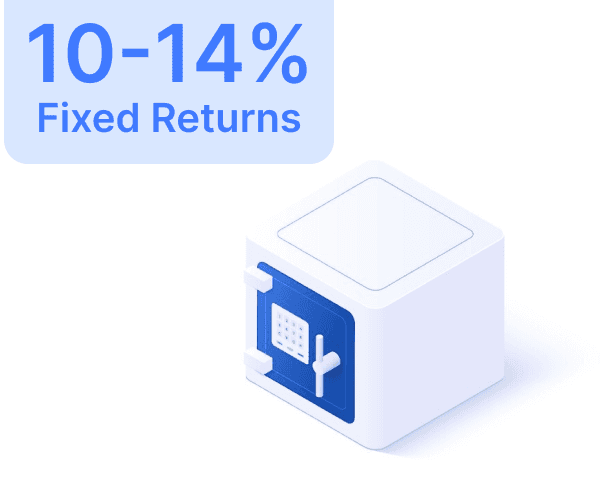
Trusted by 1L+ Indians
Want to Achieve any of the below Goals upto 80% faster?

Dream Home

Dream Wedding

Dream Car

Retirement

1st Crore


Dream Home

Dream Wedding

Dream Car

Retirement

1st Crore


Trusted by 1L+ Indians
Want to Achieve any of the below Goals upto 80% faster?

Dream Home

Dream Wedding

Dream Car

Retirement

1st Crore


Dream Home

Dream Wedding

Dream Car

Retirement

1st Crore


Trusted by 3 Crore+ Indians
Want to Achieve any of the below
Goals upto 80% faster?

Dream Home

Dream Wedding

Dream Car

Retirement

1st Crore

Trusted by 3 Crore+ Indians
Want to Achieve any of the below
Goals upto 80% faster?

Dream Home

Dream Wedding

Dream Car

Retirement

1st Crore

Trusted by 3 Crore+ Indians
Want to Achieve any of the below Goals upto 80% faster?

Dream Home

Dream Wedding

Dream Car

Retirement

1st Crore


Trusted by 3 Crore+ Indians
Want to Achieve any of the below Goals upto 80% faster?

Dream Home

Dream Wedding

Dream Car

Retirement

1st Crore

Tax Assessment: Understanding the Process and Its Implications
Tax Assessment: Understanding the Process and Its Implications




Introduction to Tax Assessment
Tax assessment is a critical process in the realm of taxation, essential for determining the financial obligations of individuals and businesses towards property taxes. It involves evaluating the value of property or income to establish the amount of tax liability. This process is pivotal for ensuring that governments can adequately fund public services and infrastructure. Tax assessments are conducted by tax assessors or assessors, who are responsible for estimating the value of real property, personal property, or income. This article delves into the intricacies of tax assessment, exploring its various facets and implications.
The Role of Tax Assessment
Tax assessment is primarily concerned with calculating the value of property or income to determine the appropriate amount of tax owed by the taxpayer. This valuation is crucial for the collection of taxes, which is necessary for the functioning of federal, state, and local governments. The assessment process involves estimating the value of the property, which is then used as a basis for calculating the tax liability.
Assessment of Property
When it comes to property, tax assessment involves evaluating the value of a property, which is performed by a tax assessor. The result of this evaluation is referred to as the "assessed value." This assessed value serves as the base figure for calculating property taxes. Generally, there is a direct correlation between the assessed value of a property and the amount of tax liability. In other words, the higher the assessed value, the higher the tax bill will be.
Market Value vs. Assessed Value
The relationship between market value and assessed value varies depending on the jurisdiction. In some areas, the assessed value is intended to be equivalent to the market value of the property. Market value refers to the price that a property would likely sell for on the open market. However, in other jurisdictions, the market value is adjusted by an assessment ratio to arrive at the assessed value. The assessment ratio is a percentage of the market value that is used to determine the assessed value.
Calculation of Property Tax
Once the assessed value is determined, it is used to calculate the property tax. This calculation involves multiplying the assessed value by a tax rate, commonly referred to as the "mill rate." The mill rate is expressed as a percentage or a fraction, and it represents the amount of tax payable per unit of assessed value. For example, a mill rate of 10 mills means that for every $1,000 of assessed value, $10 in tax is owed.
Appealing an Assessment
Taxpayers generally have the right to appeal the assessed value determined by the tax assessor. The appeal process typically begins with the taxpayer conducting an independent valuation of their property and comparing it with the assessed value. If the taxpayer believes that the assessment is inaccurate, they can present their case to the relevant authorities. This process allows taxpayers to ensure that their property taxes are based on a fair and accurate assessment.
Tax Assessment in the United States
In the United States, tax assessment is a crucial function carried out at the local government level. Tax assessors, who may be appointed or elected officials, are responsible for determining the value of taxable properties within a county, municipality, or township. This valuation is used to establish the tax rates necessary to support the community's annual budget.
Roles and Titles
In different states, the title and responsibilities of the official responsible for tax assessment may vary. For example, in Florida, this official is known as the property appraiser. In Vermont, the role is referred to as a lister. Despite the varying titles, the fundamental responsibilities remain consistent: evaluating property values and ensuring that appropriate tax rates are applied.
The Importance of Accurate Assessment
Accurate tax assessment is crucial for several reasons. Firstly, it ensures that property taxes are distributed equitably among taxpayers based on the value of their property. This helps in maintaining fairness in the tax system. Secondly, accurate assessments contribute to the effective functioning of local governments by providing them with the necessary revenue to fund public services, infrastructure, and community projects.
Challenges and Considerations
The tax assessment process is not without its challenges. One of the primary issues is ensuring that assessments are conducted fairly and accurately. Factors such as fluctuating property values, changes in market conditions, and discrepancies in data can impact the accuracy of assessments. Additionally, taxpayers may sometimes perceive assessments as unfair, leading to disputes and appeals.
Technological Advancements in Tax Assessment
In recent years, technological advancements have significantly impacted the tax assessment process. Geographic Information Systems (GIS), automated valuation models (AVMs), and data analytics have enhanced the accuracy and efficiency of property valuations. These technologies allow assessors to analyze vast amounts of data and make more informed decisions about property values.
Future Trends in Tax Assessment
Looking ahead, the field of tax assessment is likely to continue evolving. As technology advances and data collection methods improve, the process of tax assessment may become more streamlined and accurate. Additionally, there may be increased efforts to address disparities and ensure fairness in the assessment process.
Conclusion
Tax assessment is a vital component of the taxation system, playing a key role in determining property tax liabilities and supporting government functions. Understanding the process and its implications helps taxpayers navigate their responsibilities and ensures that tax assessments are conducted fairly and accurately. As technology and data analytics continue to advance, the future of tax assessment holds promise for greater efficiency and accuracy.
Frequently Asked Questions (FAQs)
Q: What is the purpose of tax assessment?
A: The purpose of tax assessment is to determine the value of property or income to calculate the appropriate amount of tax owed by the taxpayer. This process is essential for funding public services and infrastructure.
Q: How is property tax calculated?
A: Property tax is calculated by multiplying the assessed value of the property by the tax rate, known as the mill rate. The mill rate represents the amount of tax payable per unit of assessed value.
Q: Can I appeal my property assessment?
A: Yes, taxpayers generally have the right to appeal their property assessment. This process involves conducting an independent valuation and presenting evidence to support the appeal.
Q: What are some challenges in tax assessment?
A: Challenges in tax assessment include ensuring accuracy, addressing fluctuations in property values, and managing taxpayer perceptions of fairness. Technological advancements are helping to address some of these challenges.
Q: How has technology impacted tax assessment?
A: Technology has enhanced tax assessment through tools like Geographic Information Systems (GIS), automated valuation models (AVMs), and data analytics. These technologies improve the accuracy and efficiency of property valuations.
Q: What trends are shaping the future of tax assessment?
A: Future trends in tax assessment include greater use of technology, improved data collection methods, and efforts to ensure fairness and accuracy in the assessment process.
Introduction to Tax Assessment
Tax assessment is a critical process in the realm of taxation, essential for determining the financial obligations of individuals and businesses towards property taxes. It involves evaluating the value of property or income to establish the amount of tax liability. This process is pivotal for ensuring that governments can adequately fund public services and infrastructure. Tax assessments are conducted by tax assessors or assessors, who are responsible for estimating the value of real property, personal property, or income. This article delves into the intricacies of tax assessment, exploring its various facets and implications.
The Role of Tax Assessment
Tax assessment is primarily concerned with calculating the value of property or income to determine the appropriate amount of tax owed by the taxpayer. This valuation is crucial for the collection of taxes, which is necessary for the functioning of federal, state, and local governments. The assessment process involves estimating the value of the property, which is then used as a basis for calculating the tax liability.
Assessment of Property
When it comes to property, tax assessment involves evaluating the value of a property, which is performed by a tax assessor. The result of this evaluation is referred to as the "assessed value." This assessed value serves as the base figure for calculating property taxes. Generally, there is a direct correlation between the assessed value of a property and the amount of tax liability. In other words, the higher the assessed value, the higher the tax bill will be.
Market Value vs. Assessed Value
The relationship between market value and assessed value varies depending on the jurisdiction. In some areas, the assessed value is intended to be equivalent to the market value of the property. Market value refers to the price that a property would likely sell for on the open market. However, in other jurisdictions, the market value is adjusted by an assessment ratio to arrive at the assessed value. The assessment ratio is a percentage of the market value that is used to determine the assessed value.
Calculation of Property Tax
Once the assessed value is determined, it is used to calculate the property tax. This calculation involves multiplying the assessed value by a tax rate, commonly referred to as the "mill rate." The mill rate is expressed as a percentage or a fraction, and it represents the amount of tax payable per unit of assessed value. For example, a mill rate of 10 mills means that for every $1,000 of assessed value, $10 in tax is owed.
Appealing an Assessment
Taxpayers generally have the right to appeal the assessed value determined by the tax assessor. The appeal process typically begins with the taxpayer conducting an independent valuation of their property and comparing it with the assessed value. If the taxpayer believes that the assessment is inaccurate, they can present their case to the relevant authorities. This process allows taxpayers to ensure that their property taxes are based on a fair and accurate assessment.
Tax Assessment in the United States
In the United States, tax assessment is a crucial function carried out at the local government level. Tax assessors, who may be appointed or elected officials, are responsible for determining the value of taxable properties within a county, municipality, or township. This valuation is used to establish the tax rates necessary to support the community's annual budget.
Roles and Titles
In different states, the title and responsibilities of the official responsible for tax assessment may vary. For example, in Florida, this official is known as the property appraiser. In Vermont, the role is referred to as a lister. Despite the varying titles, the fundamental responsibilities remain consistent: evaluating property values and ensuring that appropriate tax rates are applied.
The Importance of Accurate Assessment
Accurate tax assessment is crucial for several reasons. Firstly, it ensures that property taxes are distributed equitably among taxpayers based on the value of their property. This helps in maintaining fairness in the tax system. Secondly, accurate assessments contribute to the effective functioning of local governments by providing them with the necessary revenue to fund public services, infrastructure, and community projects.
Challenges and Considerations
The tax assessment process is not without its challenges. One of the primary issues is ensuring that assessments are conducted fairly and accurately. Factors such as fluctuating property values, changes in market conditions, and discrepancies in data can impact the accuracy of assessments. Additionally, taxpayers may sometimes perceive assessments as unfair, leading to disputes and appeals.
Technological Advancements in Tax Assessment
In recent years, technological advancements have significantly impacted the tax assessment process. Geographic Information Systems (GIS), automated valuation models (AVMs), and data analytics have enhanced the accuracy and efficiency of property valuations. These technologies allow assessors to analyze vast amounts of data and make more informed decisions about property values.
Future Trends in Tax Assessment
Looking ahead, the field of tax assessment is likely to continue evolving. As technology advances and data collection methods improve, the process of tax assessment may become more streamlined and accurate. Additionally, there may be increased efforts to address disparities and ensure fairness in the assessment process.
Conclusion
Tax assessment is a vital component of the taxation system, playing a key role in determining property tax liabilities and supporting government functions. Understanding the process and its implications helps taxpayers navigate their responsibilities and ensures that tax assessments are conducted fairly and accurately. As technology and data analytics continue to advance, the future of tax assessment holds promise for greater efficiency and accuracy.
Frequently Asked Questions (FAQs)
Q: What is the purpose of tax assessment?
A: The purpose of tax assessment is to determine the value of property or income to calculate the appropriate amount of tax owed by the taxpayer. This process is essential for funding public services and infrastructure.
Q: How is property tax calculated?
A: Property tax is calculated by multiplying the assessed value of the property by the tax rate, known as the mill rate. The mill rate represents the amount of tax payable per unit of assessed value.
Q: Can I appeal my property assessment?
A: Yes, taxpayers generally have the right to appeal their property assessment. This process involves conducting an independent valuation and presenting evidence to support the appeal.
Q: What are some challenges in tax assessment?
A: Challenges in tax assessment include ensuring accuracy, addressing fluctuations in property values, and managing taxpayer perceptions of fairness. Technological advancements are helping to address some of these challenges.
Q: How has technology impacted tax assessment?
A: Technology has enhanced tax assessment through tools like Geographic Information Systems (GIS), automated valuation models (AVMs), and data analytics. These technologies improve the accuracy and efficiency of property valuations.
Q: What trends are shaping the future of tax assessment?
A: Future trends in tax assessment include greater use of technology, improved data collection methods, and efforts to ensure fairness and accuracy in the assessment process.
Author



Share with your friends
Help you friends in learning more about personal finance by share this blog.
Help you friends in learning
more about personal finance
by share this blog.
Help you friends in learning more about personal
finance by share this blog.
Silimar Blogs


Axis Bank Credit Card Net Banking
Axis Bank Credit Card Net Banking
August 5, 2024




PNB Fixed Deposit (FD) Interest Rates
PNB Fixed Deposit (FD) Interest Rates
August 5, 2024




Linking Aadhaar to Your Punjab National Bank Account
Linking Aadhaar to Your Punjab National Bank Account
August 5, 2024




PNB SIP Calculator
PNB SIP Calculator
August 5, 2024




How to Close a PNB Account Online & Offline?
How to Close a PNB Account Online & Offline?
August 5, 2024




TDS Refund - How to Claim TDS Refund
TDS Refund - How to Claim TDS Refund
August 5, 2024


View More
Download App
Explore More
Managing assets totalling over 1 crore+



